Making short tail Merinos a genetic option
By Patrick Francis
One of sheep farming’s long held traditions, tail docking may soon be an optional rather than a standard practice for Merino breeders wanting to differentiate their flocks and wool on easy care and animal welfare grounds. Sheep geneticist Dr Jim Watts, The SRS Merino Company, Bowral NSW, and Merino stud breeder Don Mudford, Parkdale SRS ® Merino Stud, Dubbo NSW are using genetic selection to breed naturally short tail animals that do not need tail docking.
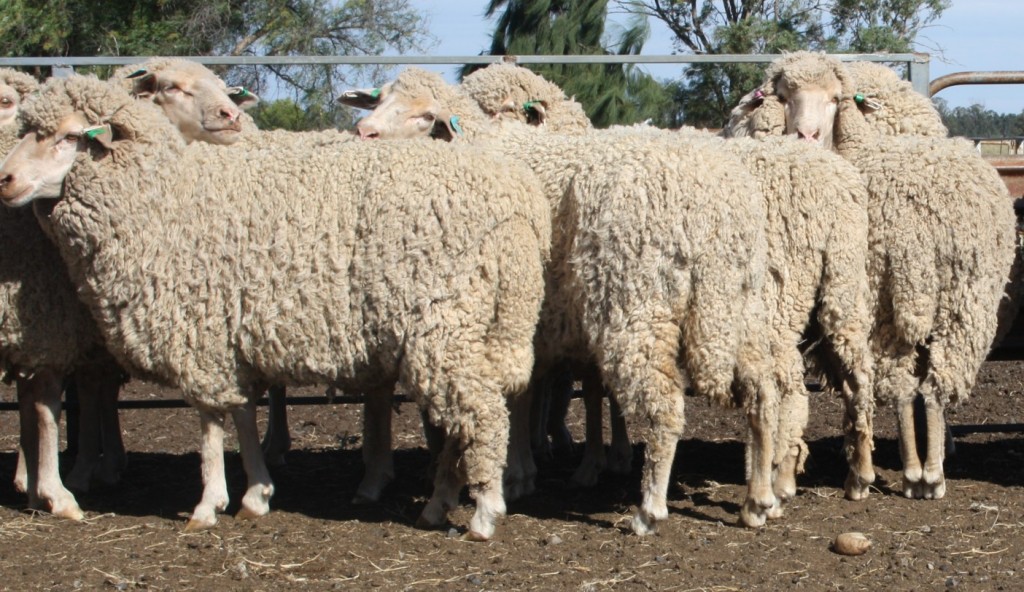
It is the first time a Merino breeding program has included selection for shorter tails in-conjunction with other skin wool and disease resistance traits related to characteristics which mean lambs no longer require mulesing.
“Breeding for short tails and non mulesing in a productive Merino wool/meat sheep demonstrates how stud breeders and scientists thinking outside the square for genetic trait improvement can open up new welfare and management opportunities for the Merino stud industry,” Dr Watts says.
For commercial Merino breeders these traits in combination with pasture and grazing management strategies which provide for optimum year round nutrition and low worm larvae contamination provide greater seedstock genetic choice than ever before in the breed’s history.
What will surprise many Merino breeders is that the short tail trait has a high heritability, 0.77 (as a comparison sheep growth rate has a heritability of about 0.35) because it controlled by only a few genes that combine to produce the effect. The reason it has not been selected for in the past is because the genes don’t exist in Merinos and must be introduced through a short tailed breed, most notably Finnish Landrace (Finn) and that’s what Watts and Mudford have done.
But the length of the tail is not the only trait the two men are working on, there are related traits like bare undersurface, pencilly shape, and strong muscular control so the tail can be lifted for urinating and defaecating.
Data from the Parkdale SRS® Merino Stud short tail flock is substantiating overseas genetic research into the trait and according to Watts this should now be recognised when developing new sheep welfare codes, currently open for public discussion. He says the “Sheep Standards and Guidelines – Tail Docking” prepared by the Animal Health Australia Sheep Standards and Guidelines Writing Group should acknowledge and contain the option of a breeding alternative to tail docking.
“The short tailed Merino sheep we have bred have excellent muscular control which allows the tail to be elevated clear of the urine stream. With half length, the sheep do not need to be tail docked, and the under surface and sides of the tail are mostly free of wool. Tails which are about half this length again, or equivalent to a tail ending slightly below the tip of the vulva in ewes, are also starting to appear, and this seems to be the final length that will be reached,” he wrote in a submission to Animal Health Australia.
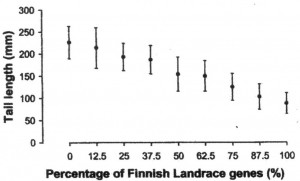
The genetic basis on which Watts and Mudford based their novel short tail breeding program stems from evidence produced by AgResearch in New Zealand where in 2002 it was shown that short tailed breeds such as the Finnish Landrace can be used to rapidly reduce tail length. The geneticists involved in this research, D.R. Scobie and D. O’Connell found tail size and length are variable amongst sheep breeds. They identified fat-tailed, short tailed, long-tailed and thin tailed breeds. The geneticists used Finnish Landrace, a commonly used breed in New Zealand for improving flock fecundity, to test the hypothesis that tail length of the progeny is determined by tail length of the parents.
Five ram lambs were chosen as sires on the basis of their own adjusted tail lengths, their breeding varied from pure Finn, Finn by Cheviot crosses, and pure Cheviot; they were mated to ewes of the same breeds and crosses. The results showed a linear relationship, that is, as percentage of Finn genes in progeny increased, tail length decreased, with longest tails median length being 225 mm for 0% Finn to 90 mm for 100% Finn blood, figure 1. However, there was reasonable amount of variation in tail length around the median value for each percentage of Finn genes in the progeny. This variation suggests there are a number of genes impacting on tail length.
The two New Zealand geneticists concluded: “reducing tail length of New Zealand sheep should be a straightforward task. In contrast with other selection criteria, it can be measured at an early age…. However, a short tail may not be a complete solution, and it will also be desirable to have the tail bare of wool, figure 2.
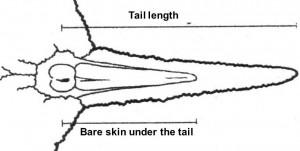
Further research by Meat & Wool New Zealand geneticists on behalf of sheep breeders “who want a sheep that has a genetically short tail, is polled and is bare of wool on parts of the body where it causes problems, on the breech, belly, head, legs and tail”, found breech bareness has a heritability of 0.31, while the length of bare skin under the tail has a heritability of 0.45. There is also a strong genetic correlation (0.41) between breech bareness at weaning and length of bare skin under the tail, and both are associated with fewer dags.
Parkdale results
Don and Pam Mudford and their sons Robert and Scott and daughters Tammy and Sarah took up the challenge of selecting short tail Merinos in 2004 after listening to a presentation about its possible advantages by Jim Watts. The Mudfords contend the shorter tail trait combined with existing breech traits which means no mulesing is undertaken in their flock, has the potential to provide additional management and marketing opportunities associated with animal welfare sensitive Merino wool textile markets.
“This is a trait we have pursued to find out if it is achievable and to make it available for other Merino breeders interested in it. We are not advocating short tails for all the industry,” Don Mudford says.
Selection in the Parkdale Merino flock is based around ‘wool’ and ‘frame’ families with both underpinned by SRS® principles for skin and wool characteristics. The Finnish Landrace short tail gene was introduced into the ‘frame’ family by four Finn rams.
“Finnish Landrace sheep, like the Parkdale Merinos, are very plain-bodied and grow wool that is similar to Merino wool. The Finn wool is white, long and about 24 microns in diameter. The Parkdale Merino ewes produce, on average, 7 kilograms of 19.2 micron wool yielding 72% (that is 5kg clean) for 12 months growth. A huge extra advantage of the Finn infusion is the high weaning percentage obtained. The pure “Finns” lamb at over 200 % with excellent lamb survival. Lambing percentages in the Parkdale Merino short tailed flock now ranges from 130 % to 170%,” Don says.
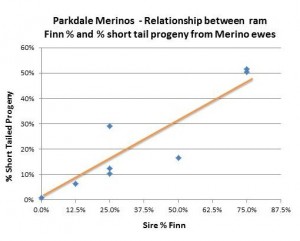
With the short tailed gene introduced in the F1 flock, the Mudfords then used it in their selection program in association with traits for conformation, wool quantity, wool quality, faecal egg count and bare breech.
Assessment for tail length, thickness and bareness is undertaken at lamb marking at eight weeks of age. Standard Merino lamb tail length is 36 – 40 cm. A short tail phenotype is considered to be a lamb with a tail less than 20 cm. So far some tails are as short as 10cm. In adult sheep Don says a half length tail, one less than 20 cm in the lambs corresponds to a tail just above the hocks.
Tail thickness is also recorded with pencil like tails preferred. Don contends such a tail is lighter to lift up and keep clear of the urine stream.
“A thinner tail with less wool towards the end seems to ensure a more active tail lift, probably because the muscles at the butt of the tail can lift it more easily. Put it another way the muscles are kept exercised and stronger. In a typical longer tail merino, the tail is heavy and the sheep stops trying to lift it, the muscles become lazy, the tail then becomes in the way all the time,” he says.
Tail length data has been collected for two lamb drops with rams of different Finn percentage exhibiting the short tail characteristic joined to ewes of 100% Merino origin. The on-farm results demonstrate a similar trend to those run under research conditions in New Zealand in 2002. As the % Finn increased so did the % of progeny with short tails, figure 2.
Another important outcome is associated with the progeny from frame ewes which have a percentage of Finn blood in them. When zero or low percentage Finn blood (12.5 – 25.0%) Merino rams are joined to these ewes a significant number of short tail progeny are born. For instance one pure Merino ram joined to F1 Finn/Merino ewes produced 30 short tail lambs out of 99 progeny. Pure Merino rams joined to lower % Finn ewes have produced between 4 and 12% short tail progeny. This suggests an alternative avenue for introducing the gene, via ewes which have the benefit of the Finn’s higher fecundity genes.
Don Mudford has introduced the Finn gene into the ewe flock via the ‘frame’ ewes for a reason. While he agrees with the New Zealand geneticists that a bare breech is correlated to a bare area under the tail, he has noticed a difference in the shape of the bare area between ‘frame’ and ‘wool’ ewes.
“There are two types of bare breeches. The ‘frame’ ewes consistently produce a V shaped bare area heading down to the udder which becomes larger with age. This is highly desirable. In contrast, the ‘wool’ ewes produce a convex shape bare area which is not as extensive in area and it doesn’t increase in size with age,” he says.
Over the years the Mudfords have retained around 150 short tailed lambs to learn more about their lifetime performance. Don says the short tailed sheep have excellent muscular control which allows the tail to be elevated clear of the urine stream. At half length the sheep do not need to be tail docked and the under-surface and sides of the tail are mostly free of wool. Even shorter tails (about 10 cm long), equivalent to a tail ending slightly below the tip of the vulva in ewes, are being born. Don considers this is the final length that will be reached.
The Parkdale SRS® Merino Stud success in breeding shorter tail sheep is a significant genetic achievement but is not as yet a commercially viable strategy. The Mudfords continue to dock virtually all lambs tails after doing the tail length assessment, because shorter tail lambs are not accepted in the market place.
“Store lamb or ewe buyers are not prepared to purchase animals with tails as they perceive them (tails) as a management problem, such as making the animals more prone to flystrike, or creating an issue with shearing or crutching. In our experience these have not been an issue,” Don says.
This thinking mirrors the discrimination non mulesed clean breech Merino sheep currently face in the store and replacement ewe market place.
Find out more:
Dr Jim Watts The SRS Company Pty. Ltd, Bowral. NSW, Australia, Tel: IDD +61 (0) 2 48622050 Mob: 0409 364 864 Fax: IDD +61 (0) 2 48622290, srs@hinet.net.au , www.srsmerino.com . Don Mudford, Parkdale SRS ® Merino Stud, 02 6887 6266, parkdale@activ8.com.au . Copyright: Patrick Francis
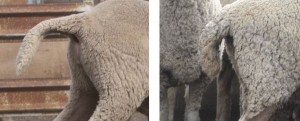
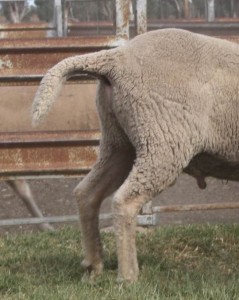
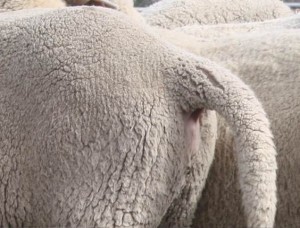
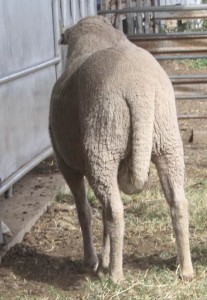

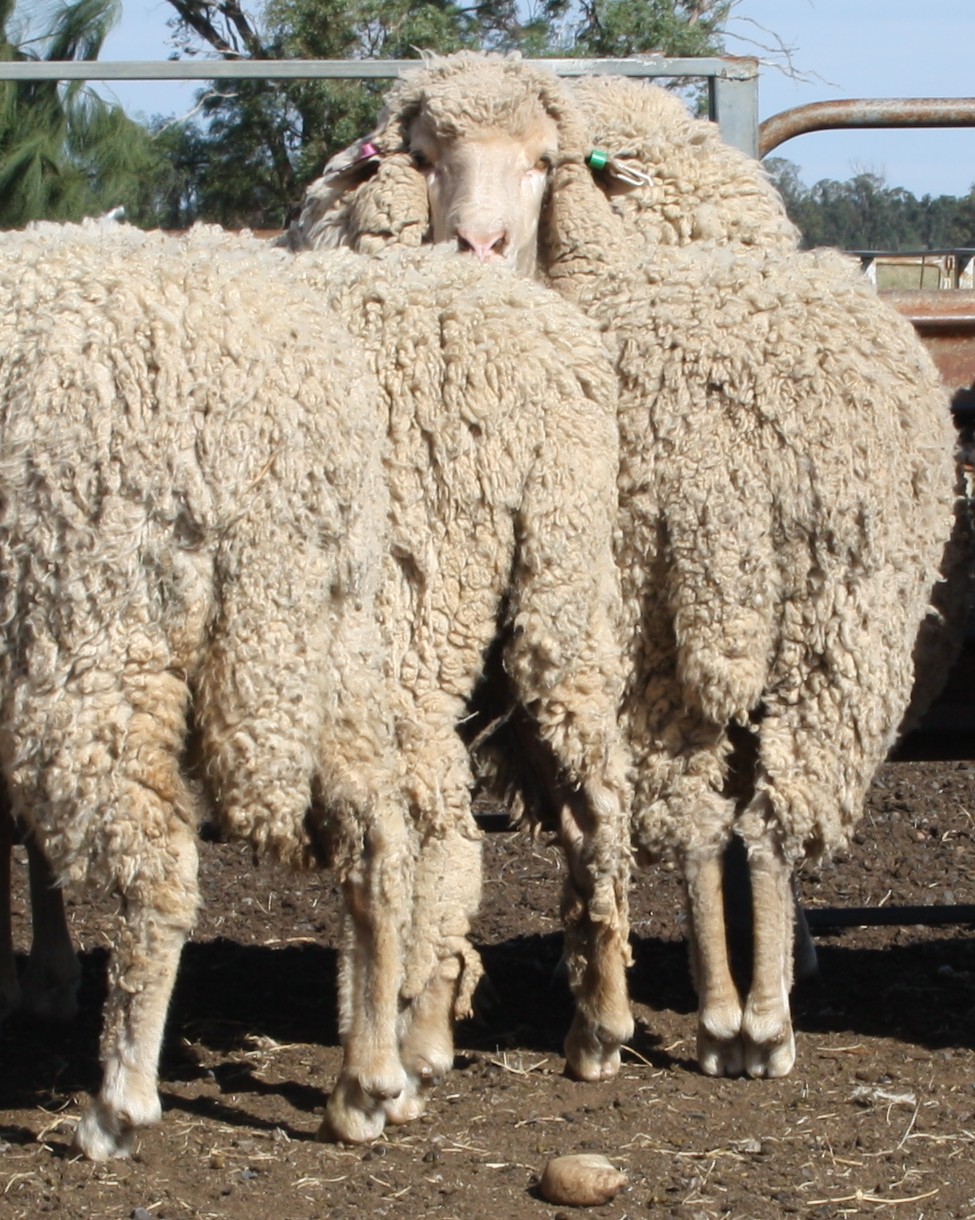

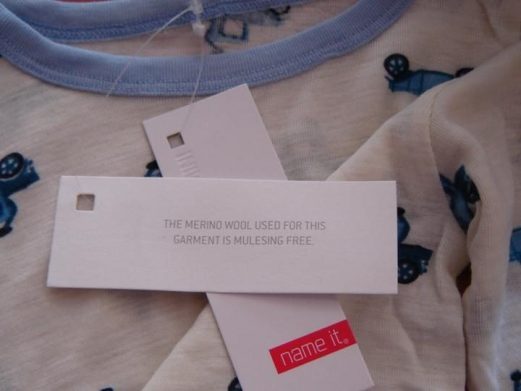

Clean tails are a realistic proposition in self replacing composite flocks based on maternal traits. Mainly because Finn and East Friesian genes fit well in that sort of breeding program. Not so for merinos though. Clean breach and tails introduced from other breeds are good for animal welfare but will almost certainly come at the expense of wool quality and volume, something wool growers are not going to persist with for very long. Wishful thinking that you can have it all in one breed. Finns are great sheep but this article is marketing hype from Jim watts